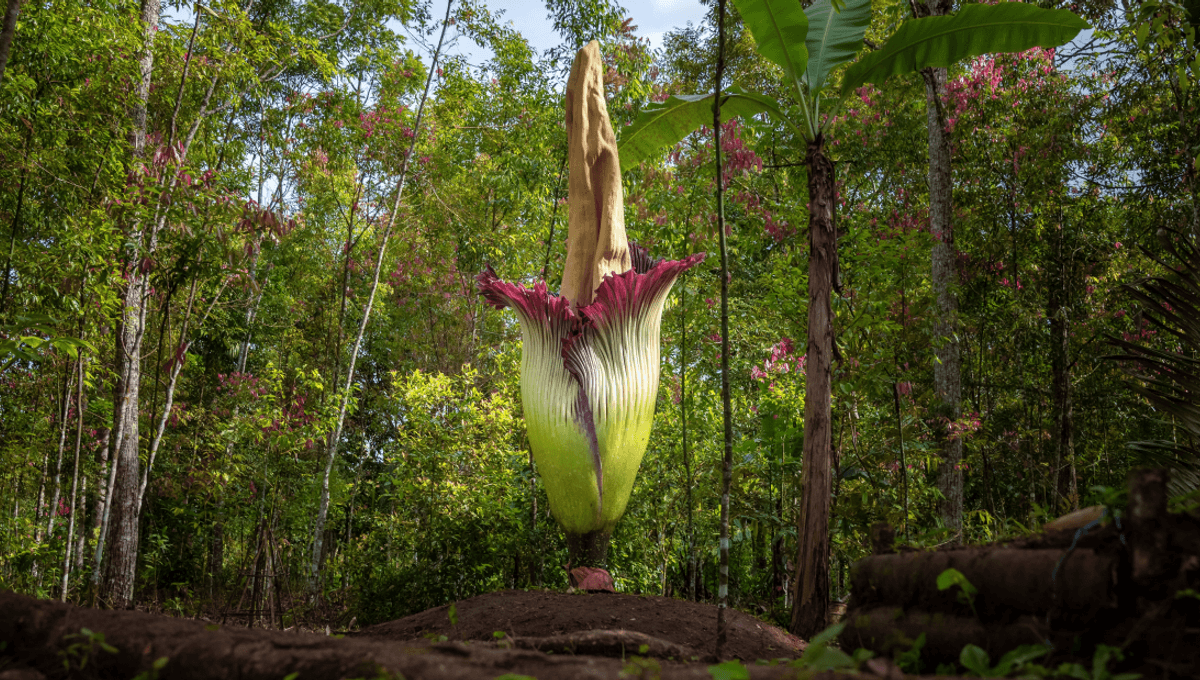
The corpse flower is one of the strangest plants on the planet, famous for the hot stench of death it unleashes when in bloom – a rare and short-lived event that lures in as many tourists as it does pollinators. Opportunities to study the mechanisms behind the odorous performance are rare, but scientists with access to a plant named Morphy have finally lifted the lid on what makes the corpse flower so, well, corpsey.
Morphy the corpse flower is a 21-year-old Amorphophallus titanum that lives in the Life Sciences Greenhouse at Dartmouth. It’s not often people have such a plant on-site, and it gave botanists at the university the chance to collect precious samples whenever Morphy was in the mood to bloom.
“The blooms are rare and also short-lived, so we only get a small window to study these phenomena,” said professor of biological sciences G. Eric Schaller in a statement. Fortunately, they were able to catch a bloom in 2016.
When a corpse flower blooms, the pinky-purple spathe unfolds from an enormous yellow spadix that can grow to 3.7 meters (12 feet), and there’s a cluster of small flowers tucked away at the bottom. It’s the shape of this unusual bloom that really puts the “misshapen penis” in Amorphophallus.
These plants have a weird habit of getting hot shortly before they start to stink, and the team was able to collect nine tissue samples at around the time Morphy’s spadix was hottest. Precious samples in the lab, the team were able to extract high-quality RNA from Morphy’s tissues and conduct further tests to work out which genes were active specifically when the plant is at its hottest and stinkiest – a combo carrion-loving insects are powerless to resist.
Generating heat in animals is made possible through a class of proteins known as uncoupling proteins that help release energy as heat. The plant alternative to uncoupling proteins are known as alternative oxidases, and RNA analyses revealed that they were showing higher expression when flowering began, as were genes involved in sulfur transport and metabolism.
Then, with the help of collaborators at the University of Missouri, they were able to identify the mechanisms that were triggered by these genes. That involved getting more samples from a subsequent bloom and running them through mass spectrometry to see the levels of amino acids.
It turned out that at the time of blooming, there was lots of something called methionine, an amino acid that’s the precursor for sulfur-based compounds that produce horrendous smells. This then dropped off a few hours later. They also found an amino acid that’s a precursor for putrescine, a key component of the “death smell” of decomposition.
It’s the first time that the molecular explanation for the heat and stench produced by the flowers has been explored, but there’s plenty more we have yet to know about these morbid plants. For instance, Schaller is eager to investigate if corpse flowers in close proximity might synchronize blooms to optimize their appeal to morbidly curious organisms (and no, we don’t mean the tourists).
The study is published in the journal PNAS Nexus.
Source Link: Blooming Corpse Flowers' Hot Death Smell Gets A Molecular Explanation